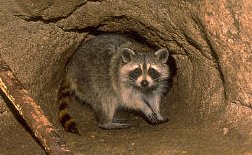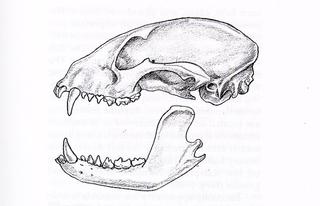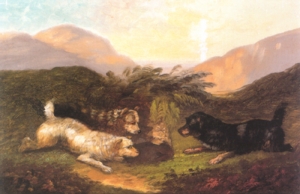Raccoon Raccoons are found across most of North America, and their numbers and range have grown considerably over the course of the last 50 years, as raccoon hunting has abated, and farm and suburban habitat has expanded into once densely forested areas. Raccoons have adapted well to urban life and are among the most common species found in cities and towns. The ideal raccoon habitat is an area with small stands of timber bordering corn and vegetable fields, and with water close by. Raccoons are omnivorous and will eat everything: crayfish, grasshoppers, grapes, corn, worms, beetles, walnuts, cherries, mice, bird eggs, small snakes, acorns, berries, garden vegetables, and soybeans. It's common to find raccoons raiding garbage cans and dumps, and many urban raccoons "commute" to their food sources via storm sewers, sometimes traveling miles underground from denning woods to restaurant dumpster banquets. A large number of raccoons are struck by cars as they are feeding on other road-killed animals such as snakes, turtles and possums. Like groundhogs, raccoons are eating machines that need to put on thick reserves of fat in order to supply them with energy and warmth through the winter months. Though raccoons do not hibernate, they may lay up in their dens for a month at a time during severe weather, and are capable of going through winter without eating at all. Raccoons do not construct their own den sites and are quite flexible and eclectic in their housing choices. While hollow trees are a common nesting location, so too are barns, attics, old squirrel nests, large forks in tree limbs, crawl spaces under houses and sheds, abandoned cars, brush piles, rock clefts, and groundhog holes. A study of over 300 raccoon dens found 89 in hollow trees, 29 in tree nests, 99 in tree roosts, 24 in rock dens, 66 in ground dens, and 2 in barns. Though normally solitary, it is not unusual to find several raccoons using the same denning hole or barn loft. In most cases this will be one large male raccoon with several young female raccoons -- a kind of harem. Outside of the breeding season, raccoons will change holes and denning locations on an almost nightly basis. Raccoon skull side, and from
top.
Like red fox and groundhogs, raccoon weights can vary considerably, depending on the age and sex of the animal and how far north it lives. Raccoons as large as 48 pounds have been reported in Maine, Minnesota and Wisconsin, while most raccoons tip the scales at between 12 and 22 pounds. Raccoons are the most common carriers of rabies in the United States, especially in the east. While your dog is immunized against rabies, you are probably not, and every precaution should be taken to avoid being bitten. Above all, stay away from animals that are walking around in daylight and that seem either fearless or lethargic -- rabies shots are expensive and painful! Raccoons mate in January through March, and litters of 3 to 6 are born between April and May after a gestation period of about 63 days. Baby raccoons weigh just 2 oz at birth, but add weight quickly. At seven or eight weeks of age, baby raccoons will begin clamoring out of the den mouth in order to play, and shortly afterwards they will begin to follow their mother on her foraging expeditions. Young raccoons are weaned by mid summer, and have generally dispersed to live their own soliatary lives by autumn. Females reach sexual maturity at age one, and males at age two. Raccoons can live up to 15 years in the wild, but few make it past their second year due to a combination of disease, malnutrition, feral farm dogs, coyotes, conflicts with automobiles and the occasional hunter and trapper. Raccoons are very tactile animals, and use their hands to pick grapes and berries very much like a human would. Raccoons have excellent hearing and night vision -- both very useful for locating small quarry such as beetles, grasshoppers and crickets. Raccoons are excellent climbers, and are one of the few animals that can descend a tree head-first -- a feat accomplished by turning their paws 180 degrees. Though raccoons can swim, they are reluctant to do so, and will rarely enter a garden pond if they cannot feel the bottom with their feet. Raccoons rarely travel more than a quarter mile from their dens, though during breeding season males may travel up to four or five miles looking for a suitable mate. Adult raccoons can be savage fighters if cornered. Few dogs can kill an adult raccoon without suffering great damage from ripping teeth and claws. If the raccoon is attacked in water, it will try to hold the dog's head underwater until it drowns. Raccoons have a variety of calls. These include hissing, barks and snorts which are uttered to express fear or as threat. In addition to these calls, raccoons may growl, snarl and squeal. To hear some typical raccoon sounds, go to http://terrierman.com/soundspage.htm The home range and population densities of raccoon vary, depending on sex, age, season, food availability, and population density. A home range of 75 acres for males and 20 acres for females is about average, and in suitable edge habitat you can expect to find one raccoon every 40 acres or so. Along with rabies -- and the usual fleas, ticks and mange mites -- dogs can also get Coonhound Paralysis. Coonhound paralysis is an auto immune sickness triggered by the dog's body reacting violently to a protein found in raccoon saliva. Symptoms will show up a few days after you return from the field. The most common reaction is for the dog to get weak in the hind legs and gradually become more paralyzed. The dog may also lose control of its bladder and experience some difficulty breathing. If you have any of these symptoms, get your dog to a vet, and have the vet run a blood test to rule out rabies. If it's coonhoun paralysis, there's not much the vet can do, as antibiotics do not work since there is no pathogen associated with the disease -- it is simply the dog's immune system reacting to a protein in the raccoon's saliva. Keep your dog bedded down inside with plenty of water, food and rest, and it will probably get better within the month.
|


